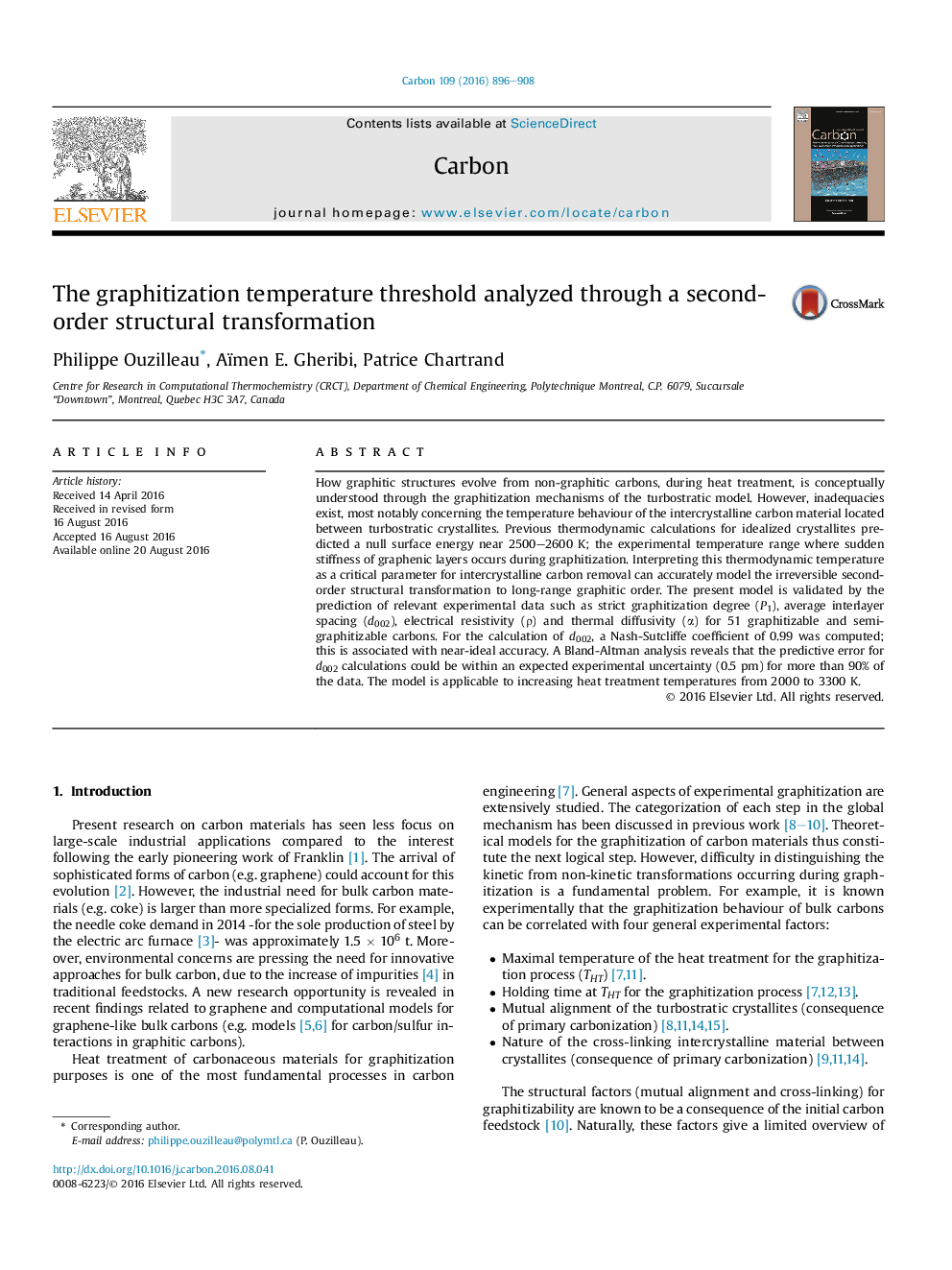| Article ID | Journal | Published Year | Pages | File Type |
|---|---|---|---|---|
| 7849646 | Carbon | 2016 | 13 Pages |
Abstract
How graphitic structures evolve from non-graphitic carbons, during heat treatment, is conceptually understood through the graphitization mechanisms of the turbostratic model. However, inadequacies exist, most notably concerning the temperature behaviour of the intercrystalline carbon material located between turbostratic crystallites. Previous thermodynamic calculations for idealized crystallites predicted a null surface energy near 2500-2600 K; the experimental temperature range where sudden stiffness of graphenic layers occurs during graphitization. Interpreting this thermodynamic temperature as a critical parameter for intercrystalline carbon removal can accurately model the irreversible second-order structural transformation to long-range graphitic order. The present model is validated by the prediction of relevant experimental data such as strict graphitization degree (P1), average interlayer spacing (d002), electrical resistivity (Ï) and thermal diffusivity (α) for 51 graphitizable and semi-graphitizable carbons. For the calculation of d002, a Nash-Sutcliffe coefficient of 0.99 was computed; this is associated with near-ideal accuracy. A Bland-Altman analysis reveals that the predictive error for d002 calculations could be within an expected experimental uncertainty (0.5 pm) for more than 90% of the data. The model is applicable to increasing heat treatment temperatures from 2000 to 3300 K.
Related Topics
Physical Sciences and Engineering
Energy
Energy (General)
Authors
Philippe Ouzilleau, Aïmen E. Gheribi, Patrice Chartrand,
